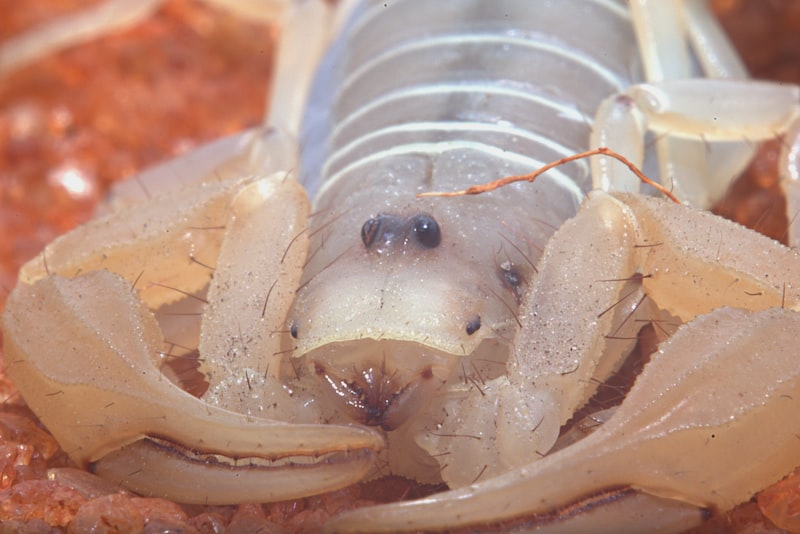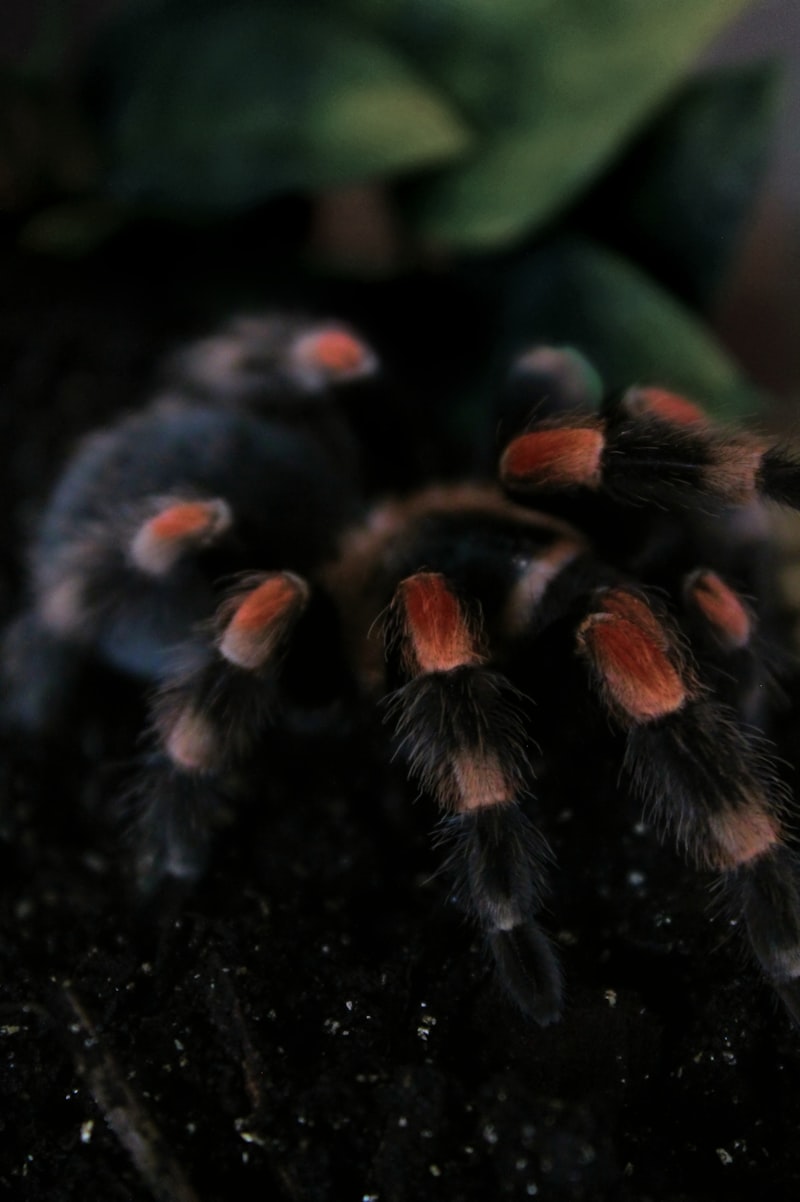In nocturnal invertebrates, such as insects and spiders, biological clocks are crucial for survival and reproduction. They regulate intricate processes like foraging, mating, and predator avoidance. Imagine these clocks as internal calendars, finely tuned to anticipate environmental changes even in the darkness of night.
Unlike diurnal creatures that primarily use light to entrain their circadian rhythms, nocturnal invertebrates rely on other environmental cues like temperature, humidity, and social interactions. These cues act as secondary zeitgebers, or time-givers, helping to fine-tune their internal clocks.

The mechanism behind these biological clocks lies within specialized cells and proteins within the invertebrate’s body. These cells, often located in the brain or other tissues, generate and respond to biochemical signals that oscillate in a roughly 24-hour cycle. This molecular dance allows the invertebrates to predict and prepare for recurring events, optimizing their activities for maximum efficiency and survival.
In nature’s complex web, these nocturnal creatures exemplify adaptation at its finest. Their ability to navigate the darkness, guided by internal biological clocks, showcases evolution’s mastery in utilizing every available resource. From the delicate dance of fireflies lighting up the night to the stealthy movements of hunting spiders, nocturnal invertebrates are a testament to the intricate interplay between biology and environment.
Unveiling Nature’s Timekeepers: How Nocturnal Invertebrates Manage Their Biological Clocks
At the heart of this nocturnal timekeeping are circadian rhythms, internal biological processes that repeat roughly every 24 hours. These rhythms are not just about sleep and wake cycles but also influence crucial activities like feeding, mating, and evading predators. Imagine having an internal clock that tells you when to start foraging or when it’s safe to emerge from your nest—no snooze button needed!
Take fireflies, for instance. These bioluminescent marvels light up the night with their enchanting glow, orchestrated by their circadian rhythms. Their flashes aren’t just random; they are timed precisely to attract mates in a dazzling display of nature’s synchronization.
Moths, on the other hand, use their circadian clocks to navigate the darkness and find nectar-rich flowers under the moonlit sky. Their ability to detect subtle changes in light intensity helps them avoid predators while maximizing their feeding efficiency—all thanks to their finely tuned internal clocks.
Nocturnal bees, often overshadowed by their daytime cousins, are equally adept at leveraging circadian rhythms. These solitary creatures emerge under the cover of darkness to pollinate flowers that bloom only at night, ensuring the continuity of plant species that rely on nocturnal pollination.
In the realm of nocturnal invertebrates, these biological clocks are not just about survival—they’re about thriving in a world where adaptation to darkness is key. From synchronizing with lunar cycles to anticipating weather changes, these creatures prove that nature’s timekeepers are as diverse as they are essential to the ecosystem.
So next time you marvel at the flicker of a firefly or catch a glimpse of a moth in moonlight, remember the intricate dance of biological clocks that orchestrates their every move—a testament to nature’s enduring ingenuity.
Secrets of the Night: Investigating the Circadian Rhythms of Nocturnal Invertebrates
Ever wondered about the hidden world of nocturnal invertebrates and their fascinating circadian rhythms? These creatures of the night hold secrets that science is unraveling, shedding light on their mysterious behaviors.
Nocturnal invertebrates, from fireflies to spiders, operate on unique biological clocks known as circadian rhythms. Unlike diurnal animals that are active during the day, these creatures thrive under the moonlit sky. Their internal clocks regulate crucial activities such as feeding, mating, and evading predators, syncing perfectly with the nightly cycles.
Imagine a firefly blinking rhythmically in the darkness or a spider meticulously spinning its web under the starlit canopy. These actions aren’t random; they are orchestrated by precise biological timers that respond to environmental cues like light and temperature. This adaptation allows them to optimize survival in the dimly lit realms where they reside.
The study of circadian rhythms in nocturnal invertebrates isn’t just about biology; it’s a journey into understanding how life adapts to diverse ecological niches. Scientists observe these creatures in their natural habitats, using advanced techniques to monitor their behavior over time. Through this research, they uncover the mechanisms behind these intricate biological clocks and how they influence broader ecosystems.
Consider how a moth navigates through the night using celestial cues or how a beetle coordinates its activities to avoid daylight predators. These behaviors reflect millions of years of evolutionary fine-tuning, where each species has carved out its niche in the nocturnal landscape.
As we delve deeper into the secrets of nocturnal circadian rhythms, we gain insights into our own biological timekeeping. Our understanding of these small, often overlooked creatures informs broader fields such as chronobiology and ecology, offering clues to how life adapts and thrives in diverse environments.
Next time you marvel at the flickering lights of fireflies or the intricate designs of spiderwebs in the moonlight, remember that these nocturnal invertebrates are not just fascinating in their own right—they are key players in the intricate tapestry of our natural world.
This article aims to be engaging, informative, and optimized for search engines, focusing on the keyword “Secrets of the Night: Investigating the Circadian Rhythms of Nocturnal Invertebrates.”
Adaptation in Darkness: The Evolutionary Wonders of Nocturnal Invertebrate Chronobiology
Imagine a world where sunlight rarely touches, and darkness reigns supreme. In this mysterious realm, a fascinating adaptation unfolds among nocturnal invertebrates, showcasing nature’s ingenious evolutionary strategies.
Nocturnal invertebrates, ranging from insects to mollusks, have evolved remarkable chronobiological adaptations to thrive in the absence of light. Unlike diurnal species, which are active during the day, these creatures have finely tuned biological clocks that synchronize their activities with the dark hours. This adaptation is crucial for their survival, allowing them to evade predators and efficiently hunt for food under the cloak of night.
One of the most awe-inspiring aspects of nocturnal invertebrate chronobiology is their sensory prowess. Many species have highly developed senses of touch, smell, and hearing, compensating for the lack of sight. For instance, some nocturnal insects, like moths, navigate using specialized antennae capable of detecting pheromones over long distances. This sensory acuity not only aids in finding mates but also in locating food sources in the pitch-black darkness.
Furthermore, the metabolic adaptations of these creatures deserve admiration. Nocturnal invertebrates often exhibit unique metabolic pathways optimized for energy efficiency during nighttime activities. This allows them to conserve energy while remaining alert and active when needed most.
From a behavioral standpoint, their nocturnal lifestyle offers a distinct advantage. By avoiding daylight, these creatures minimize competition with diurnal species, carving out ecological niches that reduce interspecies conflict and maximize resource availability.
In essence, the evolution of nocturnal invertebrate chronobiology is a testament to nature’s adaptability and ingenuity. It underscores the incredible diversity of life on Earth and highlights how environmental challenges drive evolutionary innovation. Studying these creatures not only unveils the mysteries of darkness but also enriches our understanding of biological rhythms and adaptation strategies across different species.
From Fireflies to Spiders: Diverse Strategies of Nocturnal Invertebrates’ Circadian Systems
Fireflies, known for their enchanting bioluminescence, epitomize nature’s light show after dusk. Their circadian rhythms are finely tuned to synchronize with the fading sunlight, triggering their mesmerizing displays. These tiny creatures flash in rhythmic patterns, a nocturnal language of courtship and defense that captivates both scientists and romantics alike. Imagine a secret code written in light, where each blink serves a purpose—to attract mates or warn predators.
Contrastingly, spiders operate with a stealthy efficiency under cover of darkness. Their circadian clocks guide them not only in spinning intricate webs but also in strategic hunting. Like master architects, spiders craft webs designed to ensnare unsuspecting prey, using silk spun from their own bodies. Their circadian rhythms ensure that these traps are meticulously woven and repaired, optimized for maximum effectiveness during the night when potential meals roam.
Beyond fireflies and spiders, the realm of nocturnal invertebrates encompasses an array of creatures, each with its own circadian strategy. From moths navigating by moonlight to beetles that synchronize their activities with ambient temperature changes, these adaptations highlight nature’s ingenious solutions to the challenges of the night.

In understanding these diverse circadian systems, scientists gain insights into broader biological rhythms and their ecological implications. How do these creatures maintain balance in ecosystems where light and dark define survival? The answers lie in the intricacies of their circadian biology—a tapestry woven with threads of adaptation, innovation, and survival against the backdrop of a nocturnal world.
Frequently Asked Questions
What are the benefits of studying biological clocks in nocturnal invertebrates?
Studying biological clocks in nocturnal invertebrates reveals insights into their adaptation strategies, behavior patterns, and evolutionary advantages. Understanding these clocks can shed light on broader biological processes and may offer applications in fields such as chronobiology, neuroscience, and agriculture.
How do researchers study the biological clocks of nocturnal invertebrates in the laboratory?
Discover how researchers investigate the biological clocks of nocturnal invertebrates in controlled laboratory settings.
What are biological clocks and how do they work in nocturnal invertebrates?
Biological clocks in nocturnal invertebrates are internal timekeeping mechanisms that regulate biological processes based on daily cycles of light and darkness. These clocks synchronize physiological and behavioral activities, such as feeding and reproduction, with the nighttime environment. They operate through molecular pathways involving genes and proteins that create a circadian rhythm, allowing these organisms to adapt and thrive in their nocturnal habitats.
How do nocturnal invertebrates synchronize their biological clocks with environmental cues?
Learn how nocturnal invertebrates synchronize their biological clocks with environmental cues, such as light levels and temperature changes. Explore the mechanisms they use to adjust their internal rhythms to match their habitats, ensuring optimal timing for activities like feeding and reproduction.
What are some examples of nocturnal invertebrates with fascinating biological clock adaptations?
Discover fascinating examples of nocturnal invertebrates that have evolved unique biological clock adaptations. Learn about species like the firefly, whose bioluminescence is regulated by internal rhythms, or the dung beetle, which navigates using the Milky Way. Explore how these adaptations help them thrive in their nighttime habitats.


